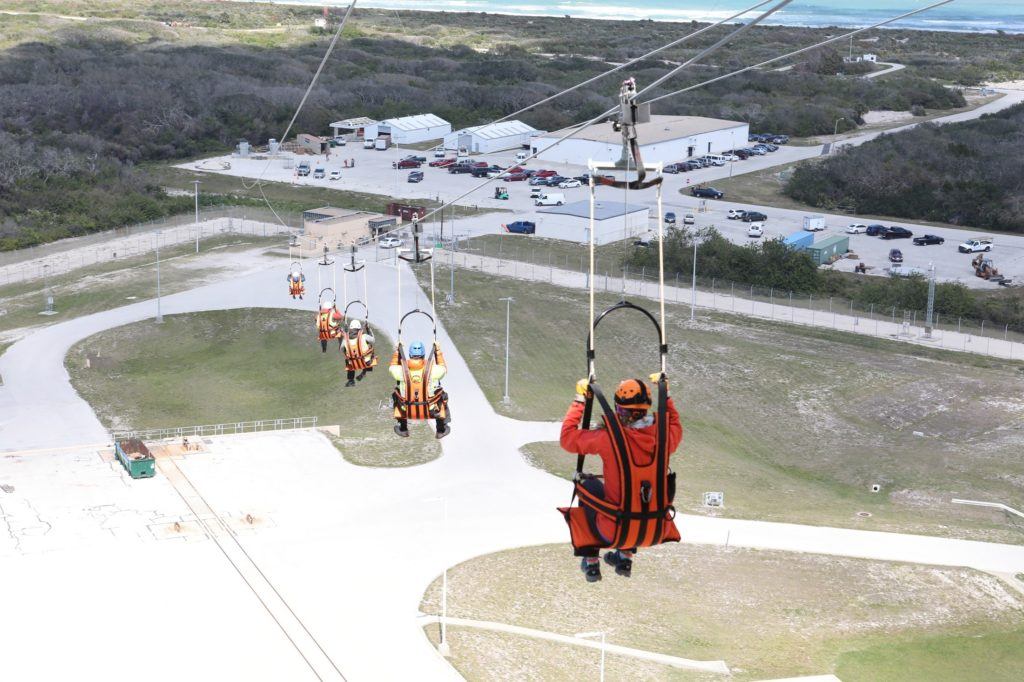When Boeing’s Starliner prepares for launch atop United Launch Alliance’s Atlas V rocket, the ground crew and astronauts need a safe evacuation plan in the unlikely event there’s an emergency on the launch pad. The Starliner emergency egress system provides that way out, carrying up to 20 people more than 1,300 feet away from the crew access tower and the launch vehicle. During the trip to the ground, astronauts and ground crews can reach top speeds of 40 miles per hour in just 30 seconds – that means they could cover more than 58 feet in a single second. Talk about a quick exit!
So, what does this emergency egress system look like? It looks a lot like a zip line! Terra-Nova, LLC was able to adapt their ZipRider® Hybrid to the specific needs of United Launch Alliance’s Atlas V rocket and Boeing’s Starliner. Because this emergency egress system is based on a commercially developed zip line system with an excellent safety record, the system was developed at a low cost, while maintaining high safety standards.
The Starliner emergency egress system operates a lot like a zip line as well. Four egress cables connect level 12 of the crew access tower to a landing zone about 1,300 feet away from the launch vehicle. This system will use five individual seats on four separate slide wires, allowing the system to transport up to 20 people off of the tower. Springs located at the end of each cable as well as manual speed controls allow riders to land safely. The Starliner emergency egress system is slightly different from previous systems, such as those from the Space Shuttle Program, which evacuated people using sliding baskets rather than individual seats.
In January 2017, the emergency egress system was installed at Space Launch Complex 41 at Cape Canaveral Air Force Station. Installing this system was yet another step in preparing the pad for Starliner’s first launch in 2018!
